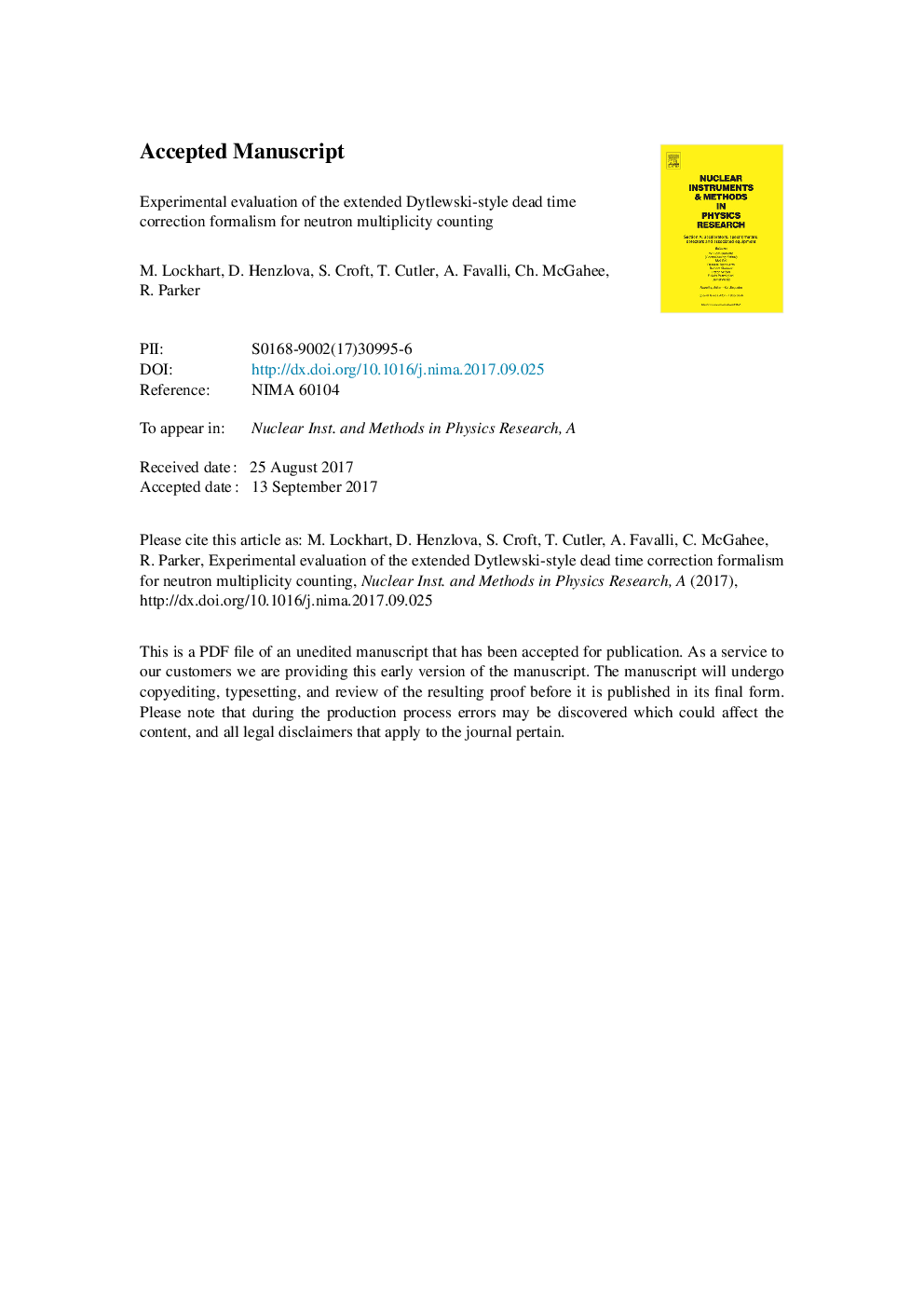| Article ID | Journal | Published Year | Pages | File Type |
|---|---|---|---|---|
| 8167349 | Nuclear Instruments and Methods in Physics Research Section A: Accelerators, Spectrometers, Detectors and Associated Equipment | 2018 | 33 Pages |
Abstract
Over the past few decades, neutron multiplicity counting has played an integral role in Special Nuclear Material (SNM) characterization pertaining to nuclear safeguards. Current neutron multiplicity analysis techniques use singles, doubles, and triples count rates because a methodology to extract and dead time correct higher order count rates (i.e. quads and pents) was not fully developed. This limitation is overcome by the recent extension of a popular dead time correction method developed by Dytlewski. This extended dead time correction algorithm, named Dytlewski-Croft-Favalli(DCF), is detailed in reference Croft and Favalli (2017), which gives an extensive explanation of the theory and implications of this new development. Dead time corrected results can then be used to assay SNM by inverting a set of extended point model equations which as well have only recently been formulated. The current paper discusses and presents the experimental evaluation of practical feasibility of the DCF dead time correction algorithm to demonstrate its performance and applicability in nuclear safeguards applications. In order to test the validity and effectiveness of the dead time correction for quads and pents, 252Cf and SNM sources were measured in high efficiency neutron multiplicity counters at the Los Alamos National Laboratory (LANL) and the count rates were extracted up to the fifth order and corrected for dead time. In order to assess the DCF dead time correction, the corrected data is compared to traditional dead time correction treatment within INCC. The DCF dead time correction is found to provide adequate dead time treatment for broad range of count rates available in practical applications.
Related Topics
Physical Sciences and Engineering
Physics and Astronomy
Instrumentation
Authors
M. Lockhart, D. Henzlova, S. Croft, T. Cutler, A. Favalli, Ch. McGahee, R. Parker,
